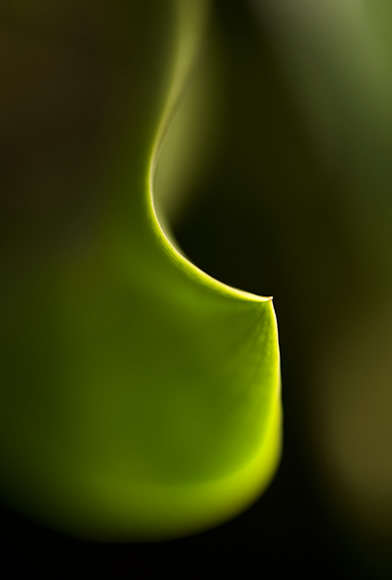Study Day and Colloquium: Great Collectors and the Art of Nature
Posted in From the Library, Humanities Institute on March 31 2017, by Vanessa Sellers
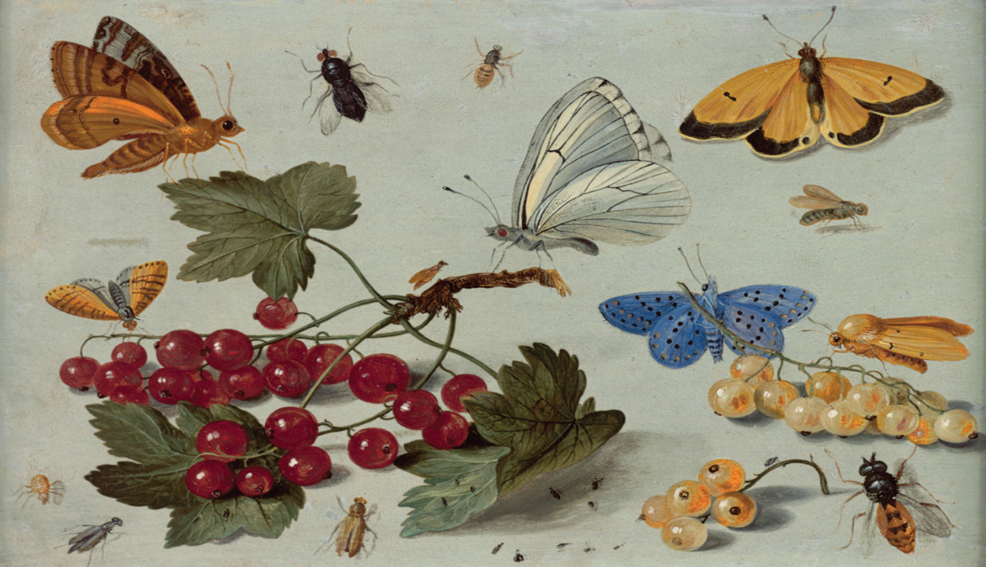

Inside The New York Botanical Garden
Posted in From the Library, Humanities Institute on March 31 2017, by Vanessa Sellers

Posted in Adult Education on December 2 2015, by Jenifer Willis
Last October, a tempting proposal popped up in the NYBG Botanical Art Program Facebook group.
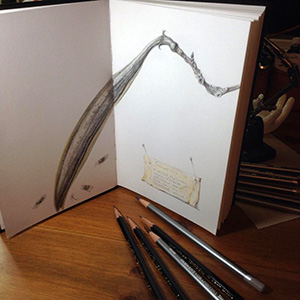
“Would anyone be interested in a ‘Sketchbook Exchange’? And, if so, how would we go about it?,” NYBG Botanical Art and Illustration Certificate alumna Monica Ray wrote.
Almost immediately, responses poured in, like “Sounds like fun! I’m in!” and “I’ll do it, too!”
By the next day, the plan was fully formed. Each of the nine participants would buy her own sketchbook and complete a nature-related drawing or painting in it before mailing it on to the next person in the exchange. Everyone would have one month to complete a new piece before mailing the sketchbooks on to the next artist. When you get your sketchbook back, the exchange is complete.
They called it “The Sisterhood of the Traveling Sketchbook.”
Posted in Exhibitions on October 2 2014, by Joyce Newman
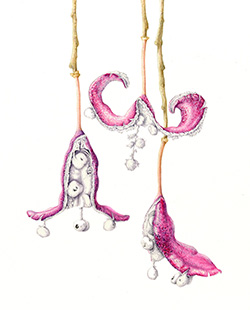
Weird, Wild, and Wonderful, the stunning botanical art exhibit in the Ross Gallery, has been extended through October 26. This exhibition invites artists from around the world to seek out visually unusual plants and create works of art that celebrate the bizarre—yet beautiful—flora of the world. From 240 submissions, members of the American Society of Botanical Artists selected 46 works created by 45 artists from the U.S., Australia, Canada, India, Japan, and the U.K.
According to NYBG instructor and botanical artist Dick Rauh, the show’s emphasis is definitely on the “weird.” He writes, “There are certain botanical categories that provide us with almost limitless examples of strange-looking plants.” He mentions “the parasites,” such as the white stalks of Indian Pipe (Monotropa uniflora) and the “evil-looking” Hydnora africana, also known as Jackal Food.
Other weird plants that Rauh notes include insectivorous plants, fungi, ferns, and those plants whose size would qualify as unusual, such as “the two-foot-wide inflorescence of the onion Allium giganteum, the huge bloom of Stapelia giganea, or living stones (Lithops spp.)—a rare example of floral camouflage. Many of these plants are featured in a gorgeous 76-page catalog of the artwork in the show, available in the Shop in the Garden.
Posted in Programs and Events on May 14 2014, by Lansing Moore
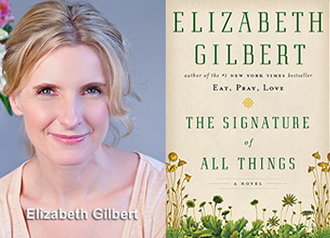 Only two more weeks until Elizabeth Gilbert and Amy Stewart come to the Garden for what promises to be one of the most engaging and inspiring evenings of the summer—and we can hardly wait! On May 29, attendees will enjoy a private viewing of the Garden’s triennial exhibit of botanical art, Weird, Wild, & Wonderful in the Ross Gallery. 46 works in a variety of media from a talented selection of contemporary botanical artists display nature’s most unusual plants as you’ve never seen them before.
Only two more weeks until Elizabeth Gilbert and Amy Stewart come to the Garden for what promises to be one of the most engaging and inspiring evenings of the summer—and we can hardly wait! On May 29, attendees will enjoy a private viewing of the Garden’s triennial exhibit of botanical art, Weird, Wild, & Wonderful in the Ross Gallery. 46 works in a variety of media from a talented selection of contemporary botanical artists display nature’s most unusual plants as you’ve never seen them before.
Specialty cocktails will be available for purchase during the viewing, crafted by none other than Amy Stewart herself, the celebrated author of The Drunken Botanist, a bestselling guide to the plants at the root—as it were—of our favorite drinks. Truly an indispensable gardening tool. The recipes for this evening include the “Kind-hearted Monster,” inspired by Asuka Hishiki’s outstanding illustration of Solanum lycopersicum—or heirloom tomato—featured in the exhibit.
Posted in Programs and Events on April 8 2014, by Lansing Moore
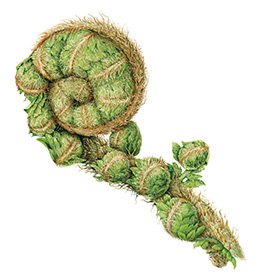
Plants aren’t all pink petals and dainty blossoms. Nature has a strange side, and botanical artists with a sense of adventure can find all sorts of singular subjects among the world’s… well, weirder specimens.
That is the inspiration behind the second New York Botanical Garden triennial exhibition, Weird, Wild, & Wonderful, a juried show co-presented with the American Society of Botanical Artists. In homage to the beauty of the botanical world’s most bizarre flora, the Garden invited members of the society to participate in a study of the eccentric, creating works of art based on visually unusual plants chosen by the artists themselves.
Posted in Adult Education on November 21 2013, by Lansing Moore
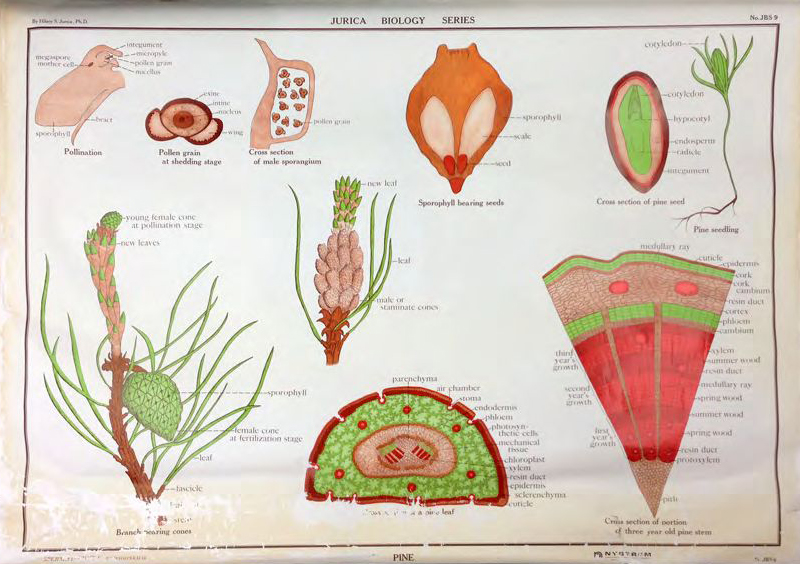
Visitors to the Adult Education classrooms on Garden grounds may have noticed a recent addition to the walls of the Watson Building in a series of framed, vintage botanical posters. These treasures were discovered in storage while refurbishing the botany lab, and we could not bear to dispose of such a colorful glimpse into the history of botanical science. While the paper had begun to yellow, the ink was flaking, and a few of the posters were beyond saving, Center Art Studio in Manhattan graciously took on the challenge of restoring ten of these double-sided instructional posters as a gift to the NYBG.
This series was originally the work of Father Hilary Jurica O.S.B., as published by A. J. Nystrom & Co., Chicago. Born in 1892, Jurica was a monk and a priest who earned a doctorate degree in biology from the University of Chicago in 1922. He was also the first monk of St. Precopius Abbey to attain this academic honor and the first American Benedictine to receive a doctorate from a secular university. Partnered with his young brother Fr. Edmund, a zoologist, Fr. Hilary the botanist spent forty years traveling around the country to gather many of the specimens on display in the Jurica Nature Museum in Illinois.
Posted in Adult Education on June 27 2013, by Lansing Moore
 People all over the country will soon be able to appreciate NYBG instructor Dick Rauh’s work alongside that of other accomplished botanical illustrators in the American Society of Botanical Artists’ current traveling exhibition, Following in the Bartrams’ Footsteps.
People all over the country will soon be able to appreciate NYBG instructor Dick Rauh’s work alongside that of other accomplished botanical illustrators in the American Society of Botanical Artists’ current traveling exhibition, Following in the Bartrams’ Footsteps.
The exhibit showcases illustrations from a wide variety of botanical artists of the plants grown, sold, and introduced by John Bartram (1699–1777) and his son William (1739–1823), pioneers of American naturalism. Knowledgeable and worldly, John and William Bartram ran a thriving business in Philadelphia shipping seeds and plants across the Atlantic for the gardens of English aristocrats, where the nature of unspoiled North America was in fashion. William continued the family business and became the first American-born botanic and natural history artist, as well as a prolific travel writer in his own right. His 1791 nature book Travels was a foundational influence for great Romantic writers such as Wordsworth, Coleridge, and Emerson.
In the course of their career, the Bartrams introduced many previously unknown species, including Franklinia, a tree William named for his friend Benjamin Franklin. Alongside Bartram’s beautiful 1788 painting of the tree’s flower—illustrating all of its component parts—is Dick Rauh’s own watercolor of the same species. We loved this illustration so much, we even used it for the cover of our Fall/Winter catalog in 2011! Bartram’s Garden felt the same way, and awarded Rauh’s painting for “encapsulating the Bartram spirit of discovery and passion for nature.”
Posted in Adult Education, Learning Experiences, Testimonials on June 8 2012, by Joyce Newman
Seize your inspiration! Sign up for Summer Intensives to make the most of the season.
For Abbey Liebman, a fashion design artist in New York City, enrolling in the Botanical Art Summer Intensives was a rewarding way to broaden her skills in fashion design and the arts that was “well worth the money.”
“After taking just a few of the NYBG classes, I have already done freelance design work in botanical art for an apothecary company’s labels. I’d like to do more work like that or begin selling my own art,” says Abbey. She plans to get a certificate at NYBG over the period of a few years while she continues to work at her regular job.
Posted in Adult Education, Around the Garden, Learning Experiences, Programs and Events on May 4 2012, by Joyce Newman
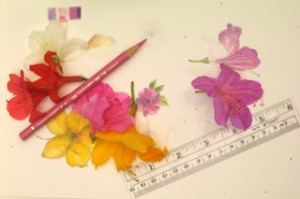 Suppose you really can’t draw, but always wished you could…especially when it comes to drawing those gorgeous blooms in your backyard. Well now’s your chance to make your wish come true: Botanical Drawing I is just one of the new summer intensive classes offered by NYBG starting in July. Think of it as a summer camp experience designed for grown-ups.
Suppose you really can’t draw, but always wished you could…especially when it comes to drawing those gorgeous blooms in your backyard. Well now’s your chance to make your wish come true: Botanical Drawing I is just one of the new summer intensive classes offered by NYBG starting in July. Think of it as a summer camp experience designed for grown-ups.
With the botanical drawing class, in just one week you’ll learn specific techniques for drawing accurately, including professional standards of form, measuring, foreshortening, and perspective. The classes are offered in July (9 through 13) or August (6 through 10), at NYBG and the Midtown Manhattan Center, respectively.
Posted in Photography on February 28 2012, by Ann Rafalko
